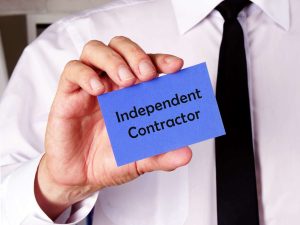Physical Address
304 North Cardinal St.
Dorchester Center, MA 02124
Physical Address
304 North Cardinal St.
Dorchester Center, MA 02124

For example, even though there is some market for obsolete computer equipment, you will be hard-pressed to sell expired food and drink. In this case, you will be discarding the product, so you will need remove the inventory from the company’s books. In addition, if the inventory is included in the obsolescence reserve, you must remove it from the reserve as well. While it may seem tedious, maintaining accurate inventory records and regularly reassessing inventory reserves can ultimately save a business from significant financial losses. The need for an excess inventory reserve arises when the inventory levels exceed the demand, and the inventory is expected to lose value over time.

Ensuring compliance with relevant accounting standards, such as IFRS IAS 37, is crucial to record and disclose provisions appropriately. This involves recognizing provisions promptly to ledger account align with the matching principle and provide accurate financial reporting. To monitor inventory obsolescence reserve, it is important to track and analyze inventory movements and transactions regularly, as well as perform physical inventory counts and reconciliations periodically. You should also monitor key indicators and metrics, such as the inventory turnover ratio, inventory days, inventory obsolescence rate, and inventory obsolescence reserve ratio.

LIFO Reserve works by adjusting the cost of goods sold and the value of inventory based on the LIFO method. When a company https://www.bookstime.com/ purchases inventory, the cost of the items is recorded in the inventory account. When the company sells items from inventory, the cost of those items is recorded in the cost of goods sold account. Using the LIFO method, the cost of the last items added to inventory is used to calculate the cost of goods sold.

This can lead to potential overestimating or underestimating liabilities, which can be a concern for companies. Companies must regularly monitor and adjust provisions to reflect actual circumstances and changing economic conditions. This can be a time-consuming process, but it’s essential to provide stakeholders with reliable insights into a company’s financial health. From the manufacturer’s perspective, reverse logistics is about recapturing value from returned or unsold items. This could involve refurbishing products for resale, harvesting components for use in other products, or responsibly disposing of materials to minimize environmental impact. For example, a smartphone manufacturer might refurbish returned devices for resale in emerging markets, or harvest rare earth metals for use in new devices.
The review may include an analysis of inventory count results, inventory discrepancies, and the frequency of inventory counts. Based on the review results, the business may determine that some of the inventory is missing, damaged, or stolen. Obsolete Inventory is the amount of inventory that passes the best quality and it will be hard to sell to the customer. inventory obsolescence reserve If an item of inventory is no longer expected to be sold, its carrying amount should be written down to its net realizable value. If you change your mind at any time about wishing to receive the information from us, you can send us an email message using the Contact Us page.


Inventory reserves are a key component of financial accounting, providing a cushion against potential losses from unsold or obsolete inventory. This ensures companies accurately report inventory value on financial statements, which is crucial for stakeholders evaluating financial health. The offset is an expense, which can be to the general cost of goods sold account, or a special expense account that’s just for obsolete inventory. Then, when you actually have obsolete inventory, write its book value down to the value the company can earn from its disposition.
For example, data analytics can help businesses identify which products are selling well, which products are not selling, and which products are at risk of becoming obsolete. This information can help businesses adjust their inventory levels and make better decisions about their stock. Without the inventory reserve entry, the value of the company’s assets would be overstated. Obsolete inventory is written-down by debiting expenses and crediting a contra asset account, such as allowance for obsolete inventory.